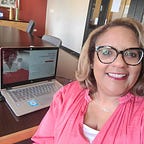Authentic Inclusion
Every person wants to be authentic wherever they are, be it at their workplaces, schools, social gatherings, or other places. Authentic inclusion is not only concerned with how people interact with each other or even the environment they are in, but it is also a complex aspect that positively builds a community. Despite the social expectations that people usually have towards others, everyone always desires to be themselves. People who experience feelings of authenticity are likely to experience more social and psychological benefits such as enhanced work performance and higher self-esteem.
Natural hair styles are a form of authentic expression that employees have been denied for the longest period now. In most organizations, both men and women are banned from wearing dreadlocks. Black women have been denied the right to wear braids in the workplace, which can be viewed as discrimination against women of color. In 2019, the JOY Collective conducted the Dove C.R.O.W.N. research study to gauge the level of discrimination experienced by Black women in the workplace because of their natural hairstyles.
Major findings of the study concluded that Black women are 30% more likely to be made aware of a formal workplace appearance policy. The majority of Black women feel their hair is targeted and must adjust her appearance. Most often Black women were consistently rated less likely ready for job performance.
This form of discrimination has led many states to enact laws to protect Black women from hair discrimination. The CROWN Act, which stands for “Creating a Respectful and Open World for Natural Hair,” is a law that prohibits race-based hair discrimination, which is the denial of employment and educational opportunities because of hair texture or protective hairstyles including braids, locs, twists or bantu knots. To date, ten states have passed legislation in support of the CROWN Act. When will we move pass the need to have a law to protect individuals from discrimination based on their inherent physical attributes?
Yet, in organizations where people are given the freedom to wear their hair in styles that are natural and chemically unaltered, they tend to work more freely without the feeling of oppression. Employees will feel that they are not being discriminated for their personalities that are oftentimes expressed via their hair thus enhancing their performance. Leaders and managers in the workplace play an important in creating an inclusive environment.
Disney recently designed a more inclusive work environment as they have now allowed their workers to be who they are at their workplace through different forms of nail art, jewelry, freedom to display tattoos, and how they wear their hair at their workplace. To elevate authentic inclusion, Disney has given its employees freedom with their nails and jewelry. They have also allowed their employees to display their tattoos that seem appropriate in ways to express their personal style. With such freedom, employees tend to show their personalities more, thus diversifying their ideas at work. According to Disney Parks Chairman, the entertainment venue has increased levels of inclusion to bring about increased engagement. When employees are given the freedom, they are likely to express diverse options of personal expression, thus creating a more engaging environment.
Freedom of clothing is another aspect of authentic inclusion in the workplace that workers should be given. However, this should have guidelines where all forms of clothing should be decent. In most firms, people working in offices are expected to put on suits, ties, and even high heels for the ladies, which can become overwhelming. When given freedom of choice as it pertains to attire, productivity can be enhanced as the employee is comfortable with whatever they are dressed in because of its simplicity. Despite Disney having dressing codes where their employees put on uniforms, they have been allowed other forms of accessories, thus substituting relaxed guidelines in place of more rigid rules.
In conclusion, how an inclusive working environment is created is by allowing employees to be who they are with their dress code, accessories they wear, tattoos they display, and even their natural hairstyles. These factors will thus create a conducive working environment as workers will increase their engagement, their style will make it easy to allocate them different roles, thus enhancing the best contribution outcomes. Authentic inclusion allows every employee to feel like they belong and their authentic personalities are respected thus making them feel free to share ideas with others to solve problems.
Originally published at Authentic Inclusion (unlimitedideals.com)
